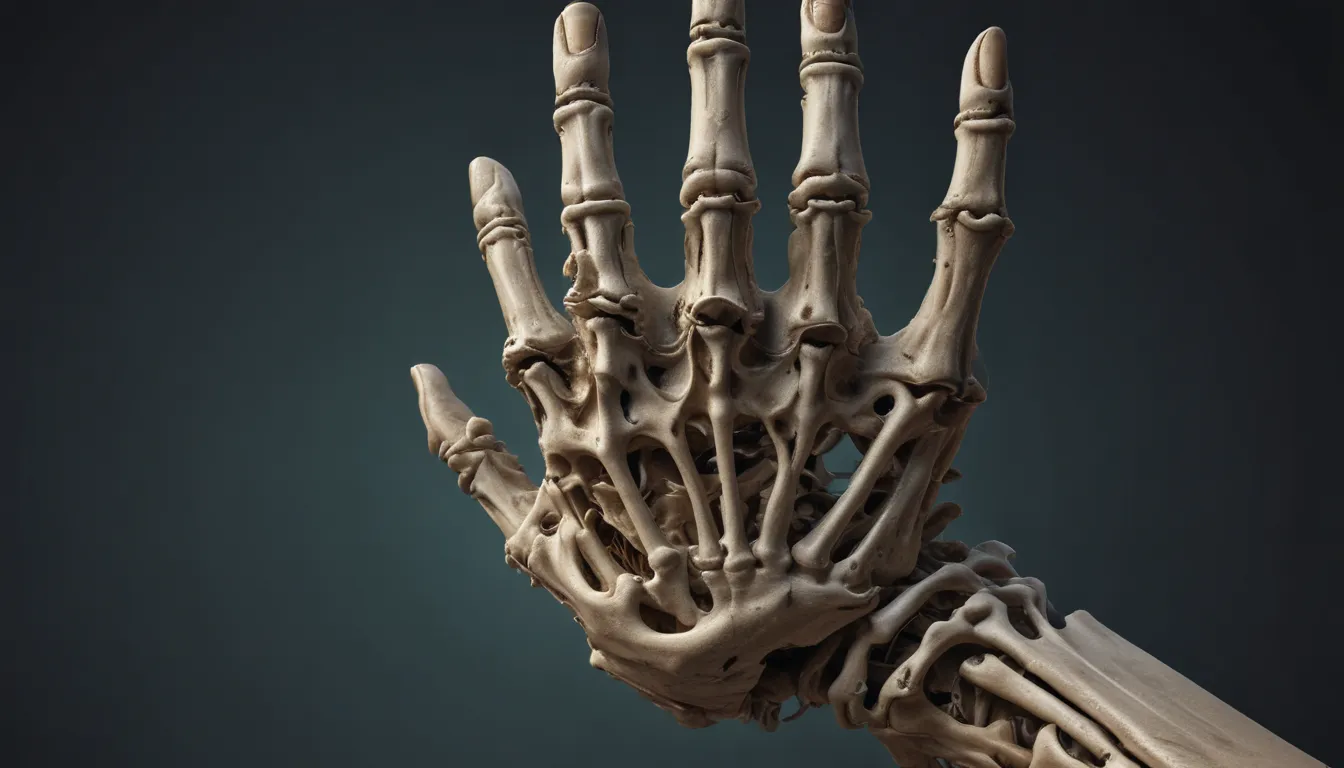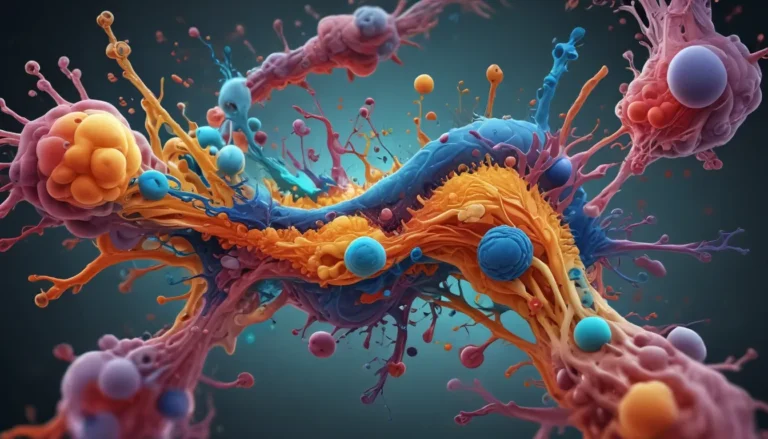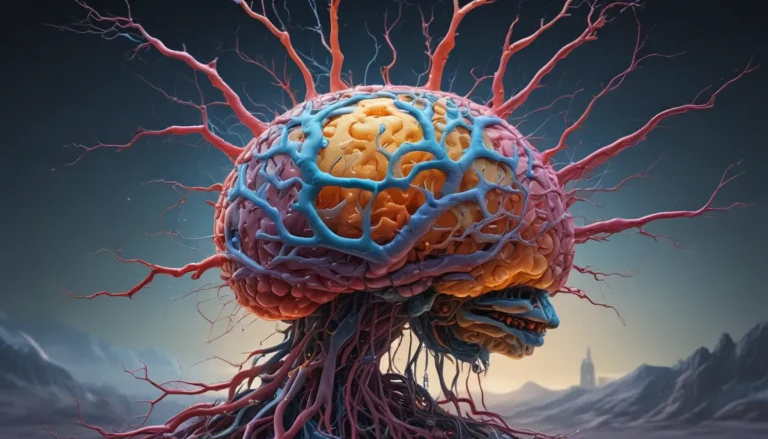A Note About Images: The images used in our articles are for illustration purposes only and may not exactly match the content. They are meant to engage readers, but the text should be relied upon for accurate information.
Have you ever stopped to think about the incredible complexity of your skeleton hand? From allowing you to type on a keyboard to giving high fives, our hands perform a wide range of tasks effortlessly. In this article, we will explore the marvels of the skeletal structure of the hand and reveal nine unbelievable facts that will leave you in awe of its functionality. Join us on a journey to uncover the hidden secrets of our intricate skeleton hand!
Key Takeaways:
- The skeleton hand, with its 27 bones, provides outstanding grip strength and flexibility, continuing to adapt and grow throughout life. It offers sensory feedback and healing abilities, shaping our evolution and communication skills.
Skeleton Hand Structure: A Remarkable Engineering Feat
The skeletal structure of the hand is a masterpiece of nature, consisting of 27 bones categorized into three main sections—carpals, metacarpals, and phalanges. This structure allows for an extensive range of movements and flexibility, enabling us to perform intricate tasks with precision and ease.
Grip Strength: A Testament to Bone Alignment
The arrangement of bones in the skeleton hand contributes to its impressive grip strength. By aligning in a way that maximizes mechanical advantage, our hands can firmly grasp objects and perform tasks that require dexterity and precision.
Continuous Growth: A Lifelong Phenomenon
Contrary to common belief, the bones in the skeleton hand do not cease to grow after reaching adulthood. Through appositional growth, they gradually lengthen over the course of a person’s life, adapting to physical changes and demands, reflecting the remarkable adaptive nature of our hands.
Joints Galore: Enabling Dexterity and Flexibility
The hand boasts numerous joints that allow for its remarkable dexterity and range of motion. From the metacarpophalangeal joints facilitating finger movement to the first carpometacarpal joint allowing rotation, each joint serves a specific purpose in our day-to-day activities.
Sensory Feedback: A Multifunctional Hand
More than just for physical movement, the skeleton hand is crucial for our sense of touch. Packed with sensory receptors, our fingers allow us to perceive sensations such as texture, temperature, and pain through an intricate network of nerves embedded in the hand.
Self-Healing Abilities: A Resilient Regeneration
Despite its delicate nature, the skeleton hand possesses an incredible ability to heal from injuries. Through the process of bone remodeling, fractures and dislocations can gradually regenerate, allowing the hand to regain function and mobility after experiencing trauma.
Individual Variations: A Unique Handprint
While the basic structure of the skeleton hand remains constant, variations in size, shape, and proportion exist among individuals. Factors such as genetics, ethnicity, and lifestyle influence the hand’s appearance, emphasizing the uniqueness of each person’s hand.
Non-Verbal Communication: Expressing Through Hands
Gestures and hand movements play a pivotal role in non-verbal communication. Whether waving hello or using sign language, our hands convey emotions, ideas, and intentions effectively, making them an essential tool for human interaction.
Evolutionary Significance: Shaping Human Progress
The development of the skeleton hand has been integral to human evolution. By enabling our ancestors to grasp objects, create tools, and perform complex manual tasks, it laid the foundation for the advancement of civilizations throughout history, highlighting its evolutionary significance.
These nine incredible facts about the skeleton hand shed light on its complexity, functionality, and evolutionary importance. From its role in physical movements to its contribution to human communication, the hand continues to captivate us with its remarkable capabilities.
Conclusion
In conclusion, the skeletal system of the human body is a fascinating and intricate system that supports our movements and protects our organs. From its flexibility to its healing abilities, the skeleton hand stands out as a remarkable feat of nature, enabling us to perform intricate tasks with ease. By understanding the anatomy and functions of our hands, we can truly appreciate the wonders of our skeletal system and its indispensable role in our daily lives.
FAQs
Q: How many bones are there in the human hand?
A: The human hand comprises 27 bones, including eight carpal bones in the wrist, five metacarpal bones in the palm, and fourteen phalanges in the fingers.
Q: Can a broken hand bone heal on its own?
A: In most cases, a broken hand bone can heal on its own with the aid of a splint or cast for immobilization. Severe fractures may require surgical intervention.
Q: Why do our fingers have different lengths?
A: Variation in finger length aids in grip efficiency and dexterity, determined by genetics and varying among individuals.
Q: How does the skeletal system support and protect our organs?
A: The skeleton provides a protective framework around our internal organs, such as the ribcage safeguarding the heart and lungs and the skull shielding the brain.
Q: Can we increase the flexibility of our hands?
A: Regular hand stretching exercises, such as yoga or specific hand movements, can enhance hand flexibility and joint range of motion.
In Conclusion
The skeleton hand is a marvel of nature, combining complexity, functionality, and evolutionary significance in a single structure. From its astonishing grip strength to its intricate network of sensory receptors, our hands are an essential part of our daily lives. Take a moment to appreciate the wonders of your skeleton hand and marvel at its incredible capabilities the next time you use them in your everyday activities. It truly is a remarkable feat of nature.






